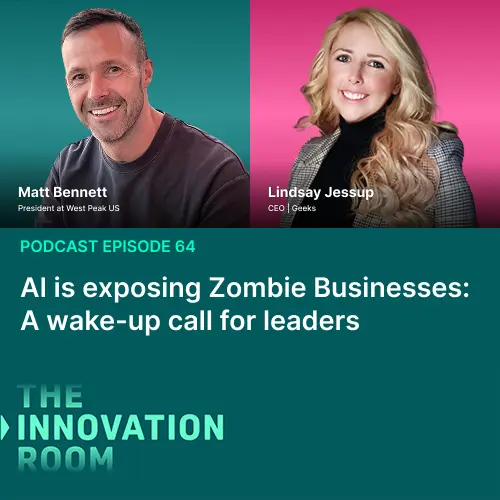
12 costly mistakes to avoid when adopting AI and what to do
AI is no longer a back-office experiment. It is now a board-level priority. Yet, despite increased investment and executive attention, most initiatives continue to underdeliver. Gartner reports that 85% of AI projects fail to meet expectations. McKinsey adds that 60% of organisations still struggle to realise ROI even two years into their AI journey.
These aren’t just technical missteps. They are strategic oversights. At Geeks, we’ve worked with mid-market and enterprise leaders to turn around initiatives that were either stalling or scaling inefficiently. The patterns are clear. Below are 12 critical and avoidable mistakes in AI adoption, along with practical ways to steer clear of them.
1. Launching without a business case
Too many AI programmes begin with vision but no financial grounding. If an initiative isn’t anchored in metrics such as cost reduction, throughput improvement, or customer retention, it risks becoming a high-cost experiment with limited organisational buy-in.
What to do: Develop a quantified business case. Align AI efforts with tangible KPIs and create a model that translates ambition into bottom-line impact.
2. Failing to align technical delivery with business strategy
When technical teams and business leaders operate in silos, the result is often misaligned outcomes. Strategic intent gets diluted by delivery gaps.
What to do: Facilitate structured co-creation from the outset. Cross-functional workshops, like those we run in our AI Opportunity Discovery, help align execution with strategic value.
3. Overlooking data readiness
Even advanced models can’t compensate for poor data. We’ve seen projects delayed or derailed by inaccessible, inconsistent, or non-compliant datasets.
What to do: Conduct a data readiness assessment early. Focus on data completeness, governance, and integration before model development begins.
4. Treating AI as a one-off implementation
AI isn’t static. Models drift. Use cases evolve. Organisations that view AI as a one-time deployment quickly lose relevance.
What to do: Treat AI as a living capability. Build internal expertise, implement feedback loops, and embed continuous improvement into your roadmap.
5. Outsourcing without building internal capability
Relying entirely on vendors often results in black-box solutions that lack long-term sustainability.
What to do: Use external expertise to accelerate delivery, but ensure knowledge transfer and internal ownership. Our AI Agent Lab enables organisations to prototype with guidance while growing in-house confidence.
6. Neglecting change management
AI changes workflows, roles, and decision-making. Without structured change management, adoption stalls.
What to do: Engage stakeholders early. Communicate value clearly. Provide tailored training and appoint internal champions to lead adoption.
7. Rushing to deploy without testing
We frequently see organisations skip pilot phases to demonstrate early progress, only to face operational issues later.
What to do: Use controlled environments to validate assumptions. Start with modular pilots, measure outcomes, and scale from a position of clarity.
8. Lacking governance and risk frameworks
AI introduces ethical, regulatory, and reputational risks. Without oversight, even high-performing models can become liabilities.
What to do: Integrate governance from day one. Include explainability, bias detection, and compliance monitoring in your core methodology.
9. Failing to monitor post-deployment
Too often, deployment is treated as the finish line. But without monitoring, models degrade and relevance fades.
What to do: Establish dashboards and reporting loops. Monitor leading indicators and iterate continuously.
10. Underinvesting in team capability
Without internal understanding, even the most advanced systems remain underused.
What to do: Build multidisciplinary capability through structured training. Create an AI centre of excellence to foster reuse and institutional learning.
11. Misjudging delivery pace
Organisations either move too quickly and overwhelm their teams, or too slowly and lose momentum.
What to do: Adopt an iterative delivery model. Prioritise quick wins that prove value while building toward scalable, long-term change.
12. Treating AI as a project, not a business capability
When AI is viewed as a finite initiative, the broader organisational value remains untapped.
What to do: Embed AI into your operating model. Use frameworks like DiGence and Dare or Die Bullseye to ensure strategic adaptability and long-term impact.
Final thoughts
Avoiding these pitfalls is not about slowing down. It is about accelerating in the right way. With a structured approach, AI adoption can become a repeatable advantage rather than a high-risk venture.
Geeks partners with enterprise leaders to design, prototype, and scale AI responsibly. From AI Opportunity Discovery to AI Agent Lab, we help organisations translate ambition into outcome with clarity, accountability, and impact.
If you're navigating the complexity of AI adoption, it is time to move beyond experimentation and build for transformation.










